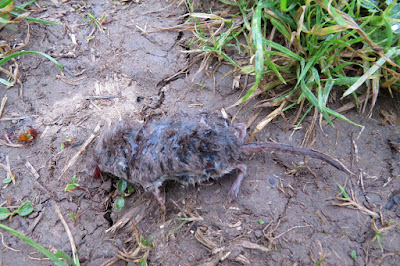A momentous day in history but one thing is for sure, in Europe or out of it, our government will continue to ignore green issues while all the time professing to be greener than the opposition.
So while the nation decides, I popped down to the patch (I did vote by the way) to see what I could find. We were rather busy today, so I didn't arrive until 16.30. Cloudy and humid with virtually no wind.
Although the flash pools continue to be extremely hard to view, I did manage to see some waders. These were four Green Sandpipers, a Redshank, and nine Lapwings.
Despite the late start there were some insects to look at and puzzle over. My first Black-tailed Skimmer this year was flying around the main pool, and a few common butterflies were still on the wing.
I'm starting to get very fond of umbellifer heads, they are like mini Serengeti Plains for insects.
The tricky bit is trying to work out what they all are. The striking black and yellow creature is another Ichneumon wasp, this time Amblyteles armatorius. Here is a better photograph of it.
At the moment I have been unable to put a name to the insect to its right. I thought it might be another soldier fly Nemotelus aliginosus, but its seems that they prefer salt marshes so its either a bit lost or more likely something else.
Another flower head revealed the presence of a micro-moth.
I am pretty confident that this is the Nettle-tap moth, which is evidently quite common. Goodness knows what the tiny insects plastering the petals around it are.
I got back to the car and decided to try to photograph some House Martins and Swallows which were briefly landing on the stones. This was pretty unsuccessful, but while I was waiting, a young Brown Hare hopped into view and then started to explore a wood stack, completely oblivious of my presence a few metres away.
Shortly afterwards a Brown Rat scurried along the edge of one of the barns. It is strange that the hare is widely loved while the rat is much hated. They are both small furry mammals, and yet I have to admit that even I shuddered when I spotted the rat.




















































